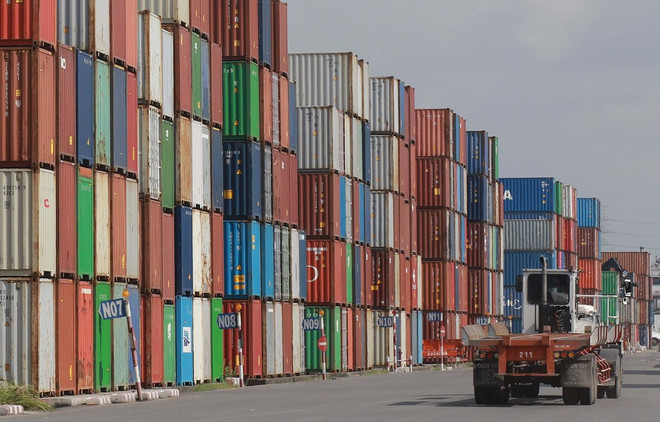 There are 19 ministries, sectors and 57 provinces and cities have issued plans on EVFTA implementation (Photo: VNA)
There are 19 ministries, sectors and 57 provinces and cities have issued plans on EVFTA implementation (Photo: VNA)Hanoi (VNA) - The implementation of the EU-Vietnam Free Trade Agreement (EVFTA) from August 2021 has created a new impetus for Vietnam -EU relations.
The deal has opened up vast cooperation opportunities, promoted trade and investment connectivity for the business community and citizens.
The total two-way turnover between Vietnam and the EU reached 41.29 billion USD in the first nine months of this year, up 13.4 per cent over the same period last year, of which, exports reached 28.85 billion USD, up 11.7 per cent.
The above result is very meaningful amid the COVID-19 pandemic, which has negatively affected economic and trade activities of countries.
After a year, the export turnover of Vietnam’s goods to the EU market using the form of certificate of origin reached a relatively high rate at nearly 8 billion USD, showing that many businesses have paid attention and made good use of tariff reduction incentives in the agreement.
The Europe-Vietnam Free Trade Agreement is a new generation FTA between Vietnam and the EU. It is a comprehensive and high-quality agreement which ensures balanced benefits for both sides.
Enforced on August 1st, 2020, the EVFTA is expected to boost Vietnam's exports, diversify markets as well as promote institutional reforms.
The research " One Year Implementation of EVFTA: Impacts on the Vietnamese Economy and Policy Formation", implemented by the Vietnam Institute for Economic and Policy Research (VEPR) with support of KAS Vietnam will be released next Wednesday. The study reviews the key points of the EVFTA and the commitments alongside impacts assessment and policy recommendation.
An assessment of the Vietnam Chamber of Commerce and Industry revealed that the level of understanding and expectations of enterprises for the EVFTA was relatively high compared with other FTAs which have been in effect.
Thirty percent of surveyed enterprises closely understand information about EVFTA commitments compared to an average of 22.95 per cent in other FTAs.
Thanks to the EVFTA, two-way trade turnover between Vietnam and the EU has grown in a more sustainable direction, both in terms of quality and quantity, with both exports and imports achieving positive results.
Agricultural products, textiles, and fishery are industries that have taken advantage of opportunities from the agreement.
In addition to the opportunity to expand and diversify the market, the EVFTA also gives Vietnam the opportunity to reform institutions, enhance transparency, improve the business and investment environment and transform the product structure towards the exports of high value-added products.
However, the competitiveness and level of deep participation in the value chain of Vietnamese enterprises are still limited; exports have not been combined with high-tech investment co-operation to produce and distribute products.
Companies also hoped that the representative agencies would strengthen the provision of information about the market, have a plan to coordinate in promoting the national brand image, and promote trade promotion activities synchronously in European regions.
Along with bright spots during one year of the implementation of the agreement, in general, Vietnamese firms have still faced many difficulties in making full use of the deal.
According to experts, the legal system of Vietnam was being changed positively to meet requirements of the deal and was facing many challenges from both inside and outside. She advised businesses to be more active to improve their capacity and products’ quality to deeper engage in the global supply chain.
In general, the EVFTA is one of the new generation FTAs that brings about strategic benefits to Vietnam through the development of the promising trade and investment partnership with one of its biggest and most important partners.
Due to COVID-19, the effectiveness of the deal is remarkably restricted. One year since the deal became effective on August 1 last year, export value of goods might reach 51.04 billion USD, up 12.27 per cent in case of no COVID-19 and no tariff reduction, and 36.28 per cent compared to the same period in the previous year./.




























